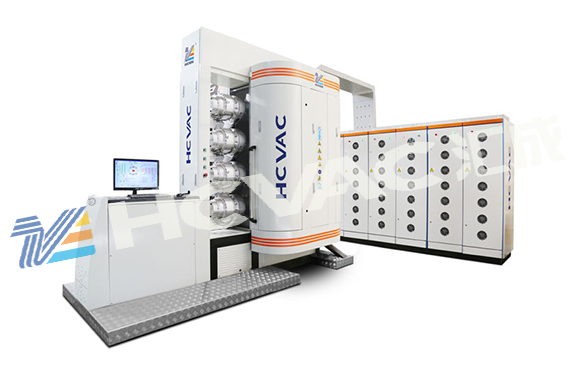For professional coating engineers, they naturally have a good understanding of pvd coating machines. But for newcomers, they still don't know much about the pvd coating machine, and they may not have heard of many knowledge points. The following is a summary of the vacuum small series for detailed understanding of the various components and principle analysis of the pvd coating machine, hoping to help everyone:

First, the vacuum main body of the
pvd coating machine - the vacuum chamber varies in size according to the requirements of the processing products. At present, the diameter of 1.3M, 0.9M, 1.5M, 1.8M, etc. are widely used. The chamber is made of stainless steel, which is required to be rust free and solid. Each part of the vacuum chamber is equipped with a connecting valve to connect each pumping pump.
Then it is the auxiliary air extraction system of the pvd coating machine: the exhaust system is an important part of the vacuum system of the coating machine, which is mainly composed of mechanical pump, booster pump (mainly the Roots pump) and oil diffusion pump. The exhaust system is composed of "diffusion pump+mechanical pump+roots pump+low-temperature cold trap+polycold". The exhaust process is as follows: the mechanical pump first pumps the vacuum chamber to a low vacuum state of less than 2.0 * 10-2PA, which provides a precondition for the subsequent vacuum pumping of the diffusion pump. Later, when the diffusion pump pumps the vacuum chamber, the mechanical pump is connected in series with the oil diffusion pump to complete the air pumping operation in this way.
What is the principle of mechanical pump of pvd coating machine and its classification:
Mechanical pump: also known as the front stage pump. The mechanical pump is a widely used low vacuum pump. It uses oil to maintain the sealing effect and continuously changes the volume of the suction cavity in the pump by mechanical means, so that the volume of the gas in the pumped container expands continuously to obtain vacuum.
1、 Classification of mechanical pumps: There are many types of mechanical pumps, including slide valve type (mainly used in large equipment), piston reciprocating type, fixed plate type and rotary plate type (widely used at present, mainly introduced in this article).
2、 The mechanical pump starts from the atmosphere, and its main parameters include the limit vacuum and the pumping rate, which is an important basis for the design and selection of the mechanical pump. The single-stage pump can pump the container from the atmosphere to an extreme vacuum of 1.0 * 10-1PA, and the two-stage mechanical pump can pump the container from the atmosphere to 6.7 * 10-2 Pa, or even higher. The pumping rate refers to the volume of gas that can be discharged in a unit time when the rotary vane pump operates at the rated speed. It can be calculated with the following formula: Sth=2nVs=2nfsL fs represents the sectional area of the cavity at the end of the suction, L represents the length of the cavity, the coefficient represents that the rotor has two exhaust processes every rotation cycle, and Vs represents that when the rotor is in a horizontal position, the suction ends. At this time, the volume in the cavity is large, and the speed is n. The exhaust effect of the mechanical pump is also related to the speed of the motor and the tightness of the belt. When the motor belt is loose and the motor speed is very slow, the exhaust effect of the mechanical pump will become worse. Therefore, regular maintenance and spot check are required. The sealing effect of the mechanical pump oil also needs to be spot checked frequently. Too little oil can not achieve the sealing effect. The pump will leak air, and too much oil will block the air intake hole, making it impossible to inhale and exhaust. Generally, The oil level should be 0.5 cm below the line.
3、 Mechanical pumps are often used to remove dry air, but they cannot remove explosive and corrosive gases with high oxygen content. Mechanical pumps are generally used to remove long-lasting gases, but they have no good effect on moisture, so they cannot remove moisture. The main components in the rotary vane pump are the stator, rotor, shrapnel, etc. The rotor is inside the stator but different from the stator's mandrel, like two inscribed circles. Two shrapnel are installed in the rotor slot, and springs are installed between the two shrapnel, ensuring that the shrapnel is tightly attached to the inner wall of the stator.



